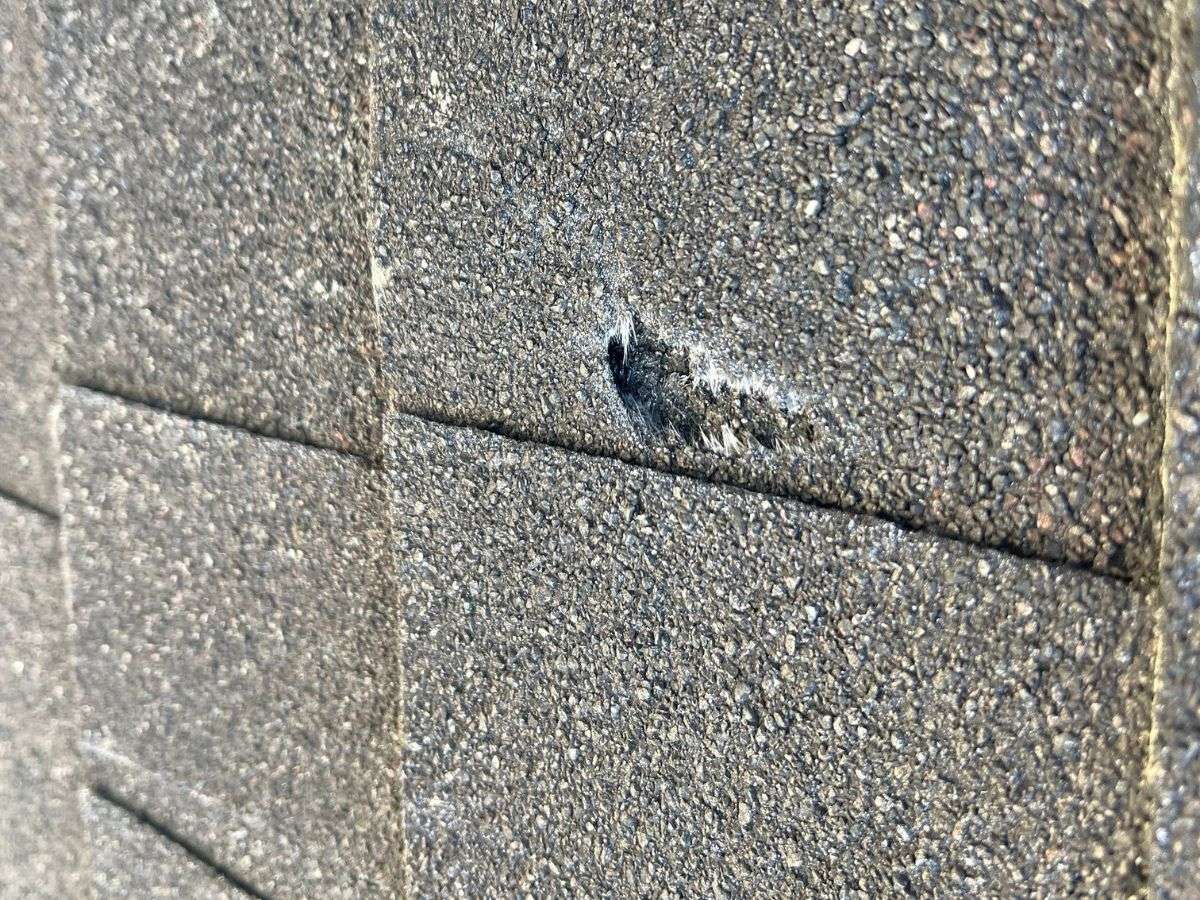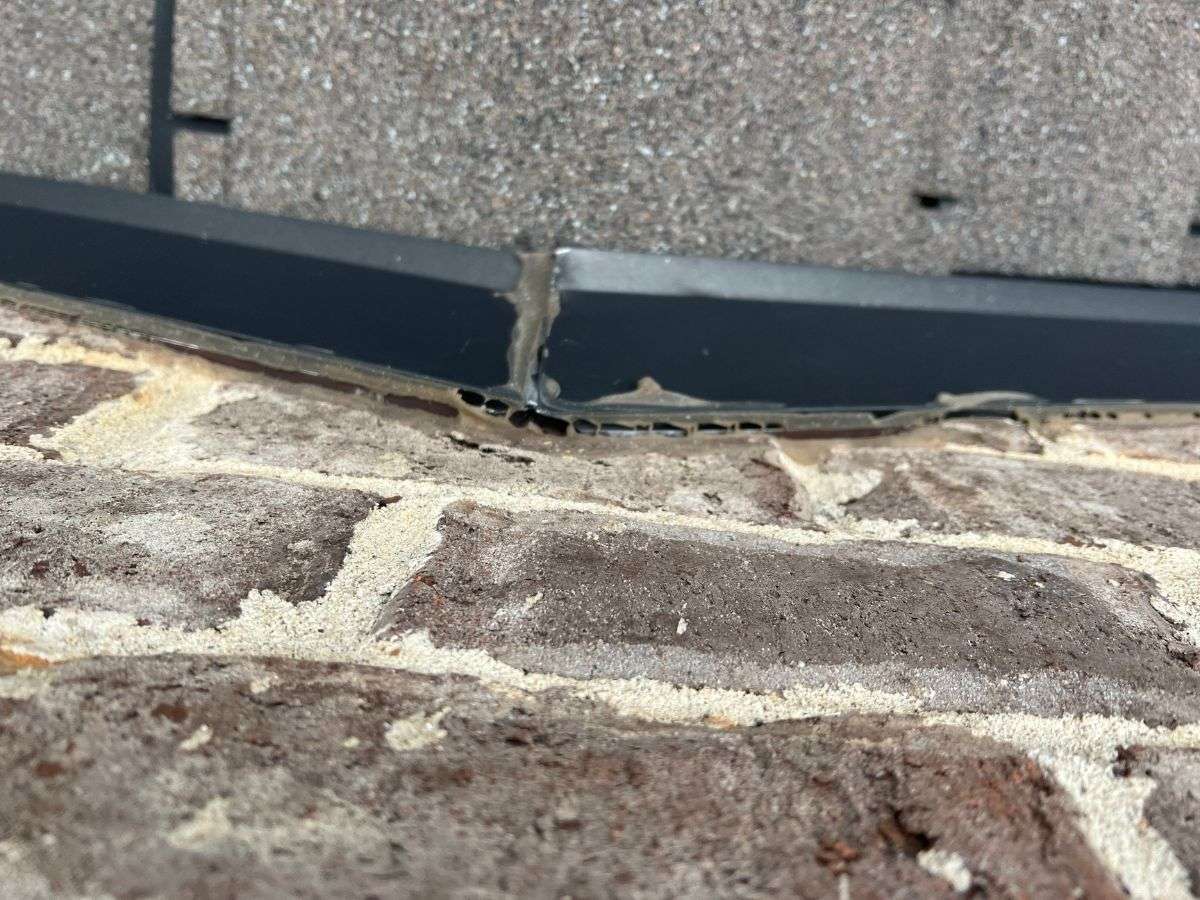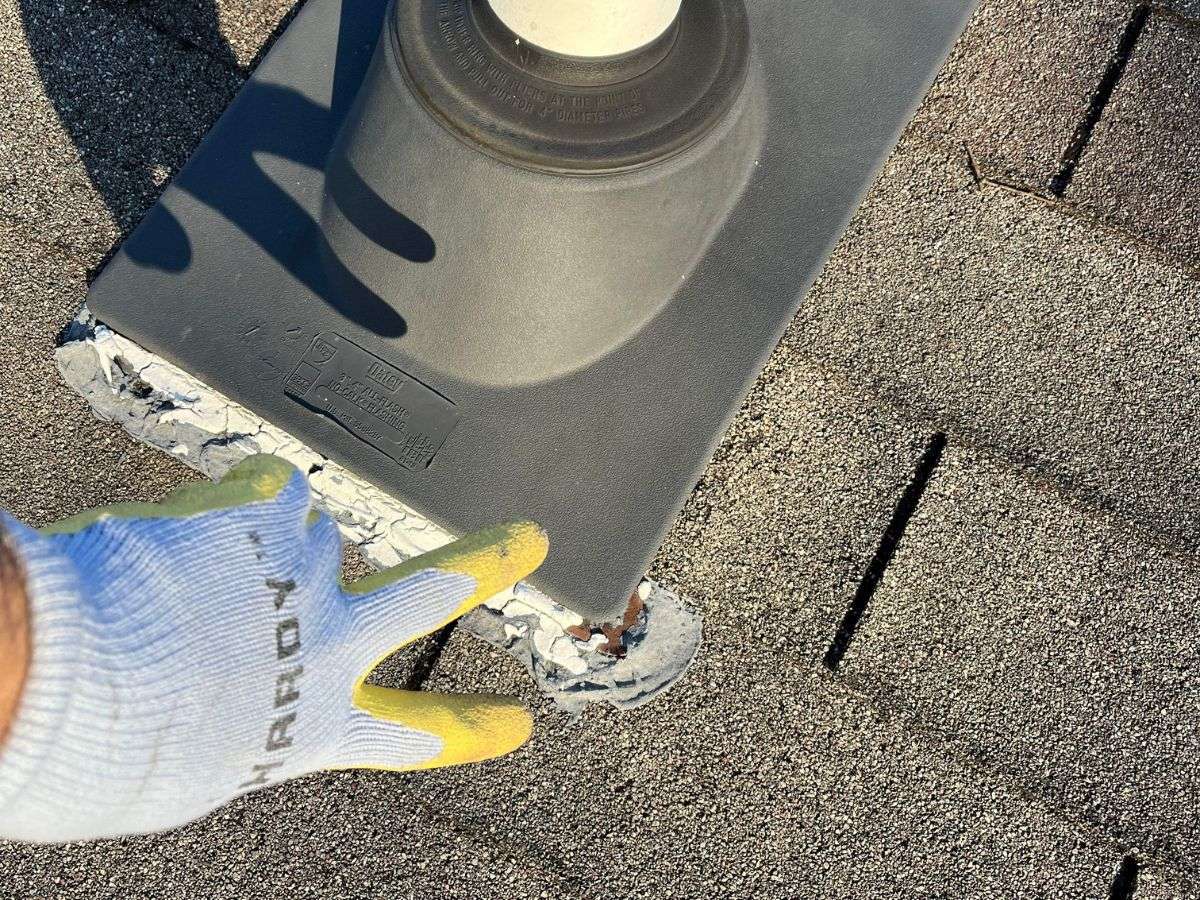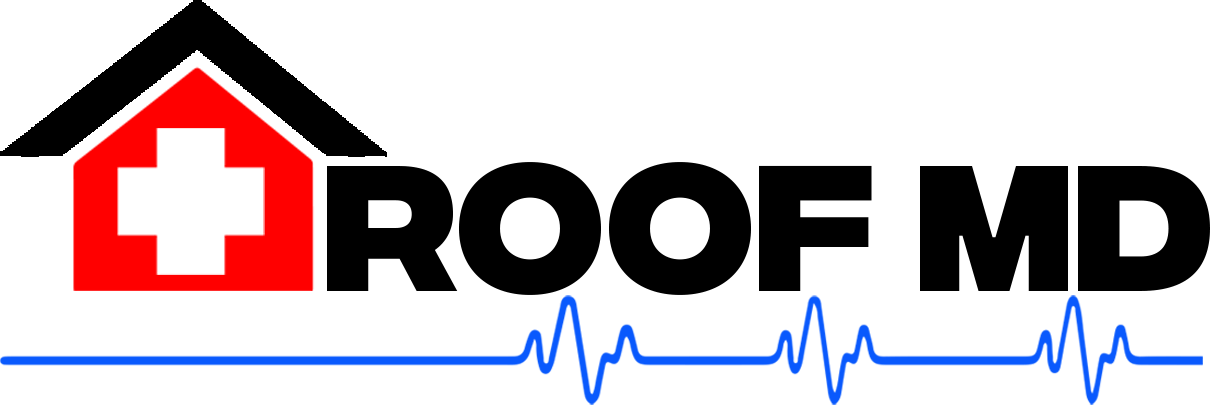The Ultimate Guide to Roof Leaks
As a homeowner, roof leaks are no joke—it can come with hefty expenses, high repair bills, and unsightly cosmetic damage. To ensure that your roof is properly maintained so that it can last as long as possible, it’s important to understand the main causes of roof leaks and which elements of the roof are most vulnerable. Keep reading this blog post for an in-depth look at the top factors that contribute to roof leak issues on a home’s rooftop.
ROOF SHINGLES

Roof shingles are the first line of defense for your roof but are particularly vulnerable to high winds, which can cause significant damage and lead to costly roof leaks. High winds can lift and remove asphalt roof shingles, exposing the underlying roof structure to the elements. This can deteriorate the roof’s integrity over time. Regular inspections are essential to identify and mitigate wind damage early. During these inspections, professionals can spot loose or missing shingles, assess the condition of the sealant, and check for other potential issues. Shingles can also suffer from other weather exposure (rain/hail), debris impact, and age-related wear and tear, compromising the roof’s protective barrier and allowing water leaks. Water intrusion can lead to mold growth, wood rot, and interior damage, necessitating extensive repairs. Proper maintenance and the use of high-quality materials can extend the lifespan of your roof, which typically lasts about 20 years. Investing in durable, weather-resistant shingles and scheduling routine maintenance can save homeowners from unexpected expenses and ensure the longevity and safety of their roofs.
GUTTERS
If you allow leaves to accumulate on the gutter, their added weight could cause it to weaken and detach from the fascia or underlying roof structure; this would create room for water leakage. Any water pooling in these systems or an overflow of moisture will start eating away at wood surfaces and corroding metal fixtures near the roofline, leading to more costly repairs in the future. Excessive water on the roof can also lead to mold and mildew growth, which reduces the protection factor of your shingles against further damage. This type of damage is particularly concerning for those living in climates with high humidity, as well as in parts of the country that experience heavy rains. For those with sloped roofs, low slopes can increase the problem significantly if proper grading is not done. While the installation of gutters and downspouts helps, proper maintenance is required to ensure they are functioning correctly at all times.
To maintain your home’s gutters, ensure they are free of clogs and overflows. Regularly inspect for standing water, a clear sign of a clog. You can also hire a professional for a thorough cleaning and inspection. Additionally, installing gutter guards prevents debris from entering your gutters. These preventative measures ensure your gutters function properly and protect your home from water damage.
FLASHING
Protecting your home from water seepage is crucial for prolonging the life of your roof, making flashing an essential component not to be overlooked. Flashing consists of metal strips that line edges to form a barrier against moisture entering through gaps in tiles or shingles. It must create a perfect seal around chimneys, walls, pipes, and skylights to prevent water from seeping through.
Improper installation of flashing can allow moisture to penetrate, weakening the roof’s structure over time, and leading to costly repairs or even complete roof replacement. To ensure effectiveness, inspect the flashing for proper installation—unreliable roofers might reuse old materials to cut costs. If you notice gaps in the flashing or water leaking inside, contact a professional immediately.
CHIMNEY

A crucial element often overlooked is the chimney. For homes with a fireplace or furnace, chimneys are indispensable. It’s vital to ensure that the bricks or stones forming the chimney are in optimal condition, free from cracks or gaps. Over time, these materials can deteriorate, compromising the chimney’s stability. Additionally, the flashing around the chimney should be thoroughly checked to ensure it is secure. Regular professional inspections and maintenance of your chimney can prevent costly repairs and ensure the safety of your home and family.
SKYLIGHTS
Skylights are one of those features that make a building stand out, providing natural light and an open feel to any space. However, did you know that they need special attention to maintain their functionality and appearance? The sealant around the skylight area needs to be closely checked for any cracks or roof leaks. Over time, weather conditions and temperature changes can cause the sealant to deteriorate. If there is damage, chances are it might lead to bigger issues such as water leakage inside your home, which can result in structural damage and mold growth.
Additionally, it’s important to regularly check for any debris or leaves that may accumulate on top of the skylight, as they can cause clogs that prevent proper drainage. These clogs can lead to pooling water that further stresses the skylight structure. Cleaning the skylight surface not only ensures that it remains efficient in draining water but also enhances the amount of natural light entering your space. By performing regular maintenance, you can ensure that your skylight continues to be a beautiful and functional feature of your home for years to come.
VENT PIPES
Vent pipes are often among the most neglected components of a roof, yet they are crucial for long-term stability. These pipes extend from your roof to release air pressure from your plumbing system, preventing water backups into your home. Neglecting vent pipes can result in significant water infiltration, potentially damaging your air conditioning and heating systems.
Over time, vent pipes can suffer wear and tear, corrosion from weather exposure, or damage from structural shifts in the house. Such damage can lead to leaks, affecting both your ceiling and HVAC system. Detecting these roof leaks can be challenging, but common indicators include hissing or whistling noises, damp areas near the vent, and foul odors from the plumbing system.
Ensuring the proper maintenance of vent pipes is essential for the overall health of your home’s infrastructure.
RIDGE CAPS
Understanding the weak points in your roof design is essential to keep your home protected from potential damage. One of these weak points is the ridge caps, which are the highest points on your roof and can expose your home to leaks and water damage if not properly installed. Ridge caps play an important role in air circulation for your roof allowing air to flow in and out of the attic space of your home. If not installed correctly, however, water can easily get into your roof, home structure, and your attic. Also, over time, damage from debris, storms or wear and tear can cause excess air space for water or moisture to enter your home. Signs that may indicate an issue with your ridges include water stains on the ceilings in the attic or interior walls below, a musty smell coming from the attic space, or small holes where air or water can enter. Regular maintenance and inspections can help you identify any potential issues early on so that repairs or replacements can take place before more serious damage has occurred.
SATELLITE DISHES
To enjoy your favorite TV shows and movies through satellite dishes, proper installation is essential. Incorrect installation of a satellite dish may lead to excess water and moisture on your roof. Most satellite dishes are directly attached to the roof, creating multiple entry points for water. If proper seals are not installed, water can easily get past shingle systems and into your home. It is important to note that improperly sealed or installed satellite dishes are also prone to wind-driven movement, which can cause significant damage over time. If you already have a satellite dish and you notice excess sealant, dips in the roof system, or sloppy shingles then it’s best to get a professional roofing contractor out there to address the issue.
SOLAR PANELS
Solar panels are an amazing technology for saving money on your utilities, but they also present a potential source for leaks in your roof. Solar panels are usually installed directly on the roof, creating several entry points for water and moisture to penetrate. Regular maintenance of your solar panels is essential to keep them functioning properly and prevent potential damage from occurring. Make sure that all of the seals around the panels are intact, check for any visible signs of damage like cracked or loose sealant or panels and contact a professional for any repairs or replacements that may be needed.
SOFFIT AND FASCIA BOARDS
Soffits are the underside of your roof’s overhangs, and fascia boards cover the exposed edges of your roof. These elements, while often overlooked, play a crucial role in protecting your home from water intrusion and pests. They also provide ventilation for your attic space, which is essential to prevent moisture buildup that can lead to mold growth and wood rot. Without adequate ventilation, your attic could become a breeding ground for harmful mold, potentially compromising the air quality inside your home. Over time, these boards can become damaged from weather exposure, such as rain, snow, and UV radiation from the sun, as well as from pests like birds and insects. This damage can lead to potential leaks and structural damage, significantly impacting the integrity of your roof and home.
Regular maintenance is essential for the health of your roof and home. This includes cleaning out debris such as leaves and twigs, which can block vents and create moisture traps, and having a professional repair any of the damaged sections promptly. Properly functioning soffits and fascia boards can also enhance the overall appearance of your home, giving it a well-maintained and polished look.
PLUMBING BOOTS

Plumbing boots, also known as pipe boots or pipe flashings, are essential components designed to seal around plumbing pipes that penetrate through the roof. These boots are typically made from durable materials such as rubber, silicone, or metal, and they play a crucial role in maintaining the integrity of the roof by preventing water from entering the building. Over time, these boots can deteriorate due to exposure to UV rays, weather elements, and temperature fluctuations. This wear and tear can result in cracks, gaps, or other forms of deterioration in the boot’s material. Such damage can lead to water infiltration during rain or snowmelt, causing roof leaks to develop around plumbing penetrations. If left unaddressed, these leaks can cause significant damage to the building’s interior, including mold growth, rotting wood, and structural issues. Regular inspection and timely replacement of plumbing boots are therefore essential to ensure the longevity and effectiveness of the roof’s waterproofing system.
ROOF VALLEY
Roof valleys are critical areas where two sections of the roof intersect, forming a channel for efficient water drainage. These valleys are designed to handle significant water flow, especially during heavy rain or snowmelt. Damage or deterioration in roof valleys can occur due to prolonged weather exposure, debris accumulation, or improper installation practices. Over time, the accumulation of leaves and other debris can obstruct the flow of water, increasing the risk of water infiltration and leaks. Regular inspections and maintenance are essential to ensure the longevity and functionality of roof valleys, preventing potential structural damage and costly repairs.
Have Roof LeakS? Contact a Professional Roofer to Perform a Roofing Inspection.
Regular inspections and maintenance of your roof are essential to prevent costly repairs and sustain the integrity of your home. If you notice any leaks or issues, it’s wise to contact a professional roofing contractor for an inspection. Experts have the necessary skills, tools, and materials to assess and address any concerns effectively. With their assistance, you can ensure your roof remains in excellent condition, safeguarding your home for years to come.
If you reside in Tennessee or Georgia, book your free roof inspection with Roof MD. We guarantee on-site service within 48 hours and have extensive experience in providing long-term solutions for roof leaks. Additionally, we collaborate with homeowners’ insurance if your roof has been damaged by a storm or weather event. Start today!
